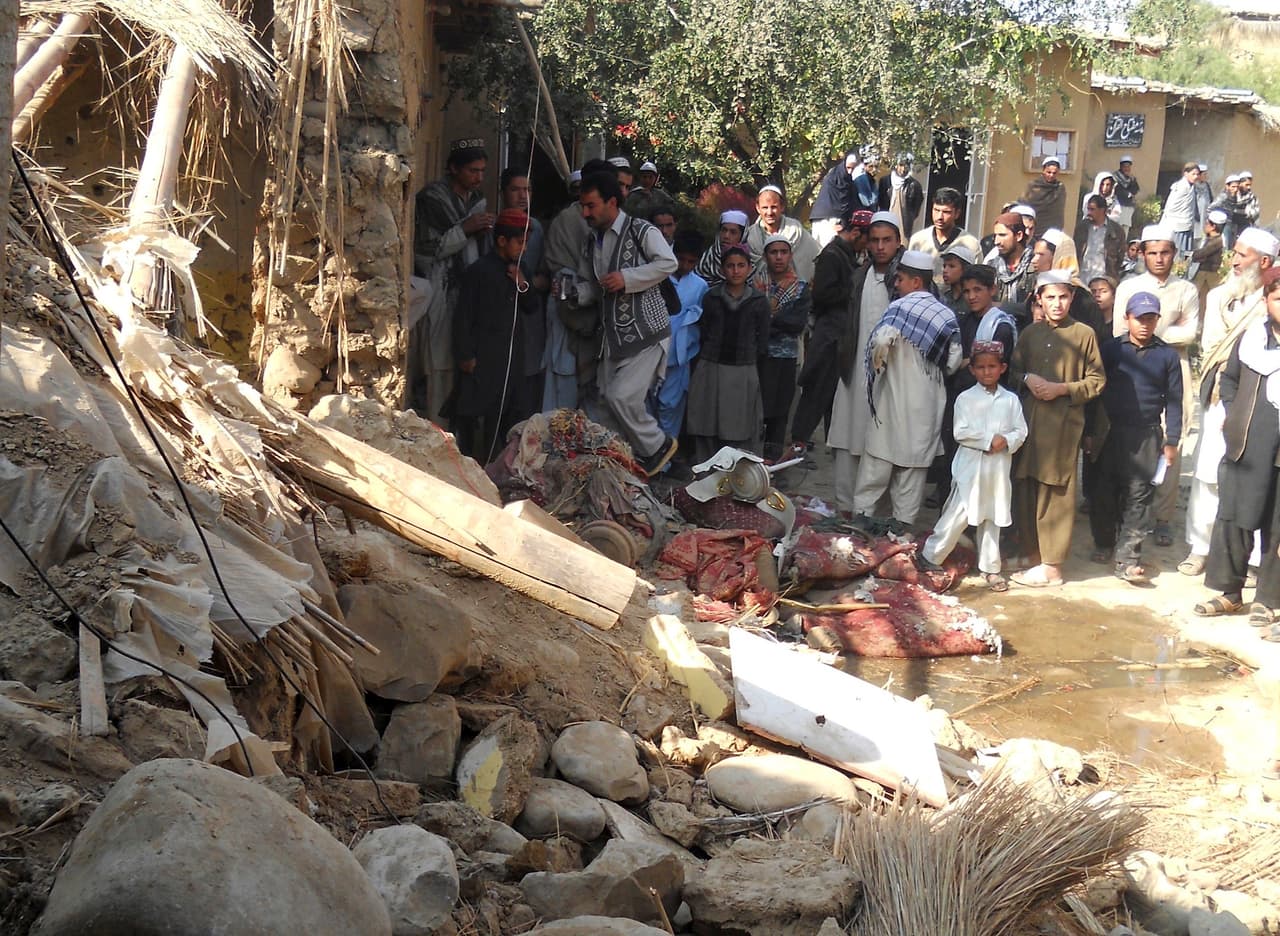
CIA drone strikes outside Pakistan’s tribal regions
Students gather at the site of the strike that demolished part of their madrassa (REUTERS/Syed Shah)
A CIA drone strike hit a religious school in Hangu, Pakistan before dawn today, killing at least six and injuring several more. It is believed to be the first time a strike has taken place in the ‘settled’ areas beyond Pakistan’s tribal regions.
The Bureau has logged reports of over 370 drone strikes in Pakistan since 2004. Almost every one of these has taken place in the Federally Administered Tribal Area (FATA), the semi-autonomous mountainous region bordering Afghanistan where large numbers of militant groups shelter alongside a civilian population.
According to the Bureau’s research, three drone strikes have previously hit outside the main body of FATA, in Frontier Region Bannu. The frontier regions are a ‘buffer’ area between the fully tribal regions and the ‘settled’ regions – the phrase used to describe the sections of Pakistan that are under provincial control. The most recent of these attacks took place in Jani Khel in March 2009, two months into Barack Obama’s presidency. Previous strikes took place in the same area in November 2008 and, according to less comprehensive reports, December 2007.
Today’s strike hit a madrassa (religious school) in a village named Tal near the town of Hangu, in Khyber-Pakhtunkhwa Province (KPK), close to FATA. Residents described seeing drones circling in the area for days beforehand.
The madrassa was reportedly a mud building of 15 rooms though the missiles reportedly only hit one room. Around 80 students escaped unharmed, the Washington Post reported. The building was reportedly used by refugees. However a Haqqani source told AFP it was also ‘a base for the network where militants fighting across the border came to stay and rest, as the Haqqani seminaries in the tribal areas were targeted by drones.’
Abdullah Khan of the Conflict Monitoring Center, a Pakistani research body, pointed out that the attack was part of a series of strikes this year targeting the Haqqani Network, a militant group that frequently attacks US and NATO troops in Afghanistan. In September, an attack in North Waziristan killed Sangeen Zadran, a commander who was described as ‘running the show’, who was also shadow governor of Paktika province in Afghanistan.
Khan added: ‘This can be classed as one of the most significant drone attacks this year. Ahmad Jan was in the shadow government of Paktika province – he headed the shadow finance ministry. These are big names in Afghanistan; his killing will have impact.’
Jan was said to have been in his 60s. He was said to be a senior Haqqani commander, its second-in-command according to one report, and its spiritual leader. He was not the only alleged militant killed – as many as five others, all reportedly senior Haqqani commanders, died in the attack.
The attack came the day after prime minister Nawaz Sharif’s foreign adviser, Sartaj Aziz, told parliament the US had assured Pakistan it would suspend drone attacks while the Pakistani government was in peace talks with the Taliban. The Pakistani government is currently attempting to get the Taliban to the negotiating table.
Mansur Mahsud of the FATA Research Center told the Bureau: ‘Yesterday Nawaz Sharif’s foreign minister gave a statement saying it would not carry out drone strikes during talks between militants and the government, and the very next day a drone strike took place in the settled area. It will increase tension and anger in Pakistan against America.’
Khan added that the strike would raise fears of drones striking targets even further afield. ‘If the Pakistani government doesn’t come up with some reaction to this, the next target will be Quetta, the headquarters of the Afghan Taliban,’ he said. ‘They have said they think Mullah Omar [leader of the Afghan Taliban] is there.’
Additional reporting by Jack Serle


